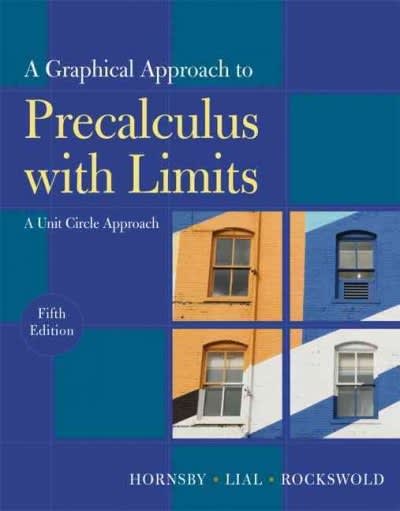Question
Question 31 True or False: In a cross-sectional study exposure and outcome are assessed at different times. Group of answer choices True False Question 32
Question 31
True or False: In a cross-sectional study exposure and outcome are assessed at different times.
Group of answer choices
True
False
Question 32
True or False: Loss to follow-up is an important concern with both cohort and experimental studies.
Group of answer choices
True
False
Question 33
True or False: In matched case-control analysis, the discordant cells of the 2x2 table, cells "b" and "c", are disregarded when calculating the OR.
Group of answer choices
True
False
Question 34
Factor A, B, or C can each individually cause a certain disease Y without the other two factors, but only when followed by exposure to factor X. Exposure to factor X alone does not cause disease, but the disease never occurs in the absence of exposure to factor X. Factor X is a:
Group of answer choices
A. Necessary and sufficient cause
B. Sufficient, but not necessary cause
C. Necessary, but not sufficient cause
D. Neither necessary nor sufficient cause
Question 35
Choose the best option for each statement.
Group of answer choices
A method of controlling confounding employed in the design stage of a study.
[ Choose ] Information Bias Healthy Worker effect Stratification Internal validity Selection Bias Hawthorne effect External validity Restriction
Errors in the process of identifying the study population.
[ Choose ] Information Bias Healthy Worker effect Stratification Internal validity Selection Bias Hawthorne effect External validity Restriction
Subjects change their behavior because they know they are being studied.
[ Choose ] Information Bias Healthy Worker effect Stratification Internal validity Selection Bias Hawthorne effect External validity Restriction
Reflects proper selection of study groups and a lack of error in measurement.
[ Choose ] Information Bias Healthy Worker effect Stratification Internal validity Selection Bias Hawthorne effect External validity Restriction
Question 36
Several studies have found that approximately 85% of cases of lung cancer are due to cigarette smoking. This measure is an example of:
Group of answer choices
A. Incidence rate
B. Attributable risk
C. Relative Risk
D. Proportional mortality ratio
E. Odds ratio
The following information is to be used to answer questions 37-42:
A pediatrician wished to determine the relationship between chronic otitis media (OM) in young children and parental history of such infections (family history). From the records of a large pediatric practice, he identified 50 children between one and three years of age who had experienced at least three middle ear infections in the preceding year (recurrent OM). Fifty children treated for illnesses other than OM by the same group practice were also identified. The pediatrician interviewed the parents of subjects in both groups to determine the parents' history of OM when they were young children (family history). Of the children with recurrent ear infections, 30 had a family history of chronic OM compared to 20 of the children treated for other illnesses.
| D+ | D- | Totals | |
| E+ | |||
| E- | |||
| Totals |
Question 37
A pediatrician wished to determine the relationship between chronic otitis media (OM) in young children and parental history of such infections (family history). From the records of a large pediatric practice, he identified 50 children between one and three years of age who had experienced at least three middle ear infections in the preceding year (recurrent OM). Fifty children treated for illnesses other than OM by the same group practice were also identified. The pediatrician interviewed the parents of subjects in both groups to determine the parents' history of OM when they were young children (family history). Of the children with recurrent ear infections, 30 had a family history of chronic OM compared to 20 of the children treated for other illnesses.
Use the information from the above scenario to complete the 2 x 2 table (Please use the "Table" function and enter your table in the space below):
| D+ | D- | Totals | |
| E+ | |||
| E- | |||
| Totals |
Question 38
What kind of study is this?
Group of answer choices
A. Cross-sectional study
B. Prospective cohort study
C. Case-control study
D. Randomized controlled clinical trial
Question 39
What is the appropriate measure of association for this study?
Group of answer choices
A. Prevalence ratio
B. Odds ratio
C. Correlation coefficient
D. Risk ratio (relative risk)
E. Risk difference
Question 40
What is the calculated value for the correct measure of association?
Group of answer choices
A. 0.44
B. 1.20
C. 1.50
D. 2.25
Step by Step Solution
There are 3 Steps involved in it
Step: 1

Get Instant Access to Expert-Tailored Solutions
See step-by-step solutions with expert insights and AI powered tools for academic success
Step: 2

Step: 3

Ace Your Homework with AI
Get the answers you need in no time with our AI-driven, step-by-step assistance
Get Started


